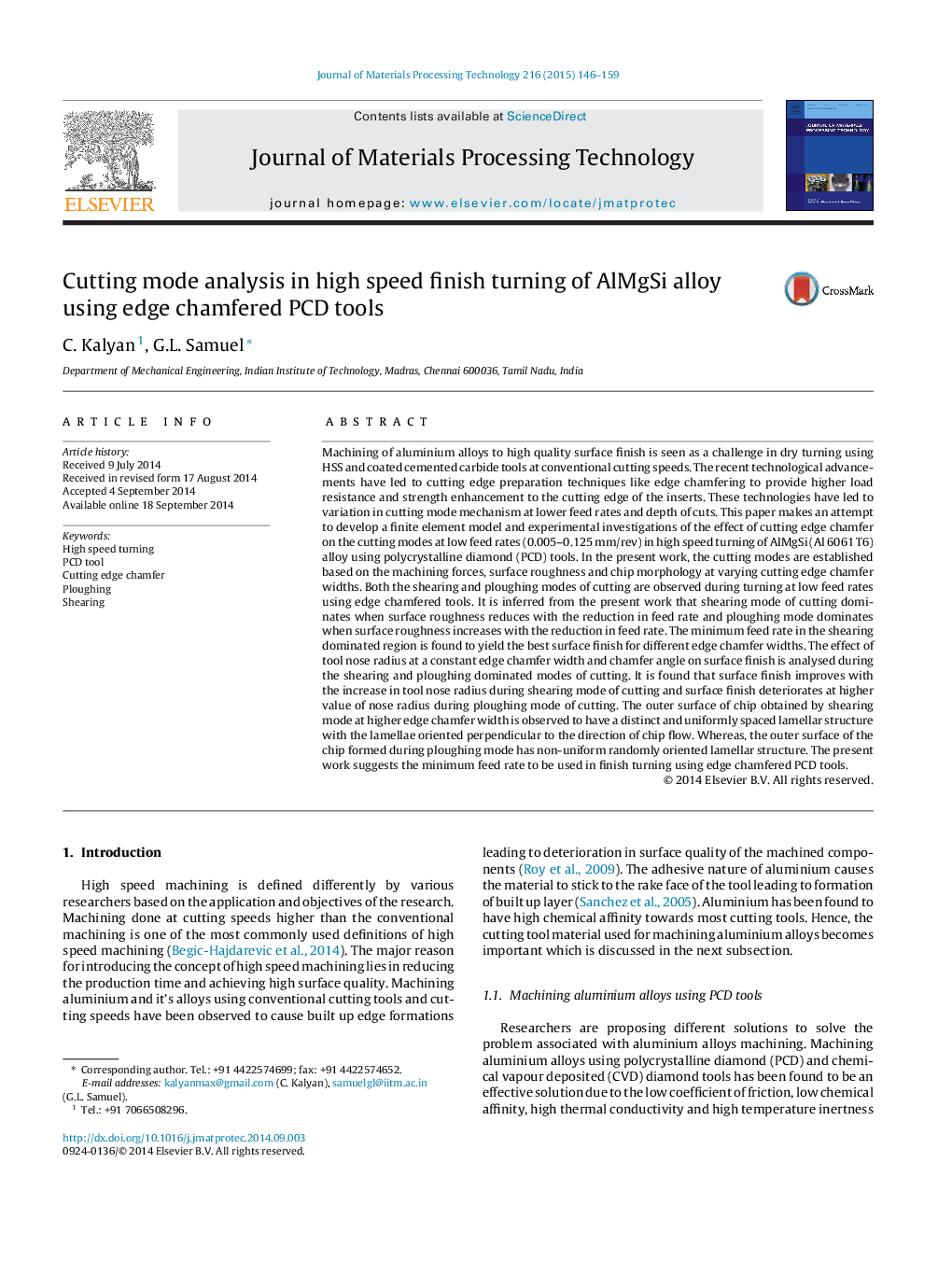| کد مقاله | کد نشریه | سال انتشار | مقاله انگلیسی | نسخه تمام متن |
|---|---|---|---|---|
| 793036 | 1466751 | 2015 | 14 صفحه PDF | دانلود رایگان |

• The shearing and ploughing zones are established based on the machining forces, surface roughness and chip morphology.
• The machining parameters are investigated to achieve excellent surface finish in high speed turning using sharp edged and edge chamfered PCD tools.
• A finite element model for predicting the forces in 3D turning is developed that considers both strain gradient and cutting edge geometry effects.
• The cutting tool manufacturing industries can use this research data to suggest the cutting edge chamfer and the feed rate values based on the required surface finish (Ra values) range.
Machining of aluminium alloys to high quality surface finish is seen as a challenge in dry turning using HSS and coated cemented carbide tools at conventional cutting speeds. The recent technological advancements have led to cutting edge preparation techniques like edge chamfering to provide higher load resistance and strength enhancement to the cutting edge of the inserts. These technologies have led to variation in cutting mode mechanism at lower feed rates and depth of cuts. This paper makes an attempt to develop a finite element model and experimental investigations of the effect of cutting edge chamfer on the cutting modes at low feed rates (0.005–0.125 mm/rev) in high speed turning of AlMgSi (Al 6061 T6) alloy using polycrystalline diamond (PCD) tools. In the present work, the cutting modes are established based on the machining forces, surface roughness and chip morphology at varying cutting edge chamfer widths. Both the shearing and ploughing modes of cutting are observed during turning at low feed rates using edge chamfered tools. It is inferred from the present work that shearing mode of cutting dominates when surface roughness reduces with the reduction in feed rate and ploughing mode dominates when surface roughness increases with the reduction in feed rate. The minimum feed rate in the shearing dominated region is found to yield the best surface finish for different edge chamfer widths. The effect of tool nose radius at a constant edge chamfer width and chamfer angle on surface finish is analysed during the shearing and ploughing dominated modes of cutting. It is found that surface finish improves with the increase in tool nose radius during shearing mode of cutting and surface finish deteriorates at higher value of nose radius during ploughing mode of cutting. The outer surface of chip obtained by shearing mode at higher edge chamfer width is observed to have a distinct and uniformly spaced lamellar structure with the lamellae oriented perpendicular to the direction of chip flow. Whereas, the outer surface of the chip formed during ploughing mode has non-uniform randomly oriented lamellar structure. The present work suggests the minimum feed rate to be used in finish turning using edge chamfered PCD tools.
Journal: Journal of Materials Processing Technology - Volume 216, February 2015, Pages 146–159